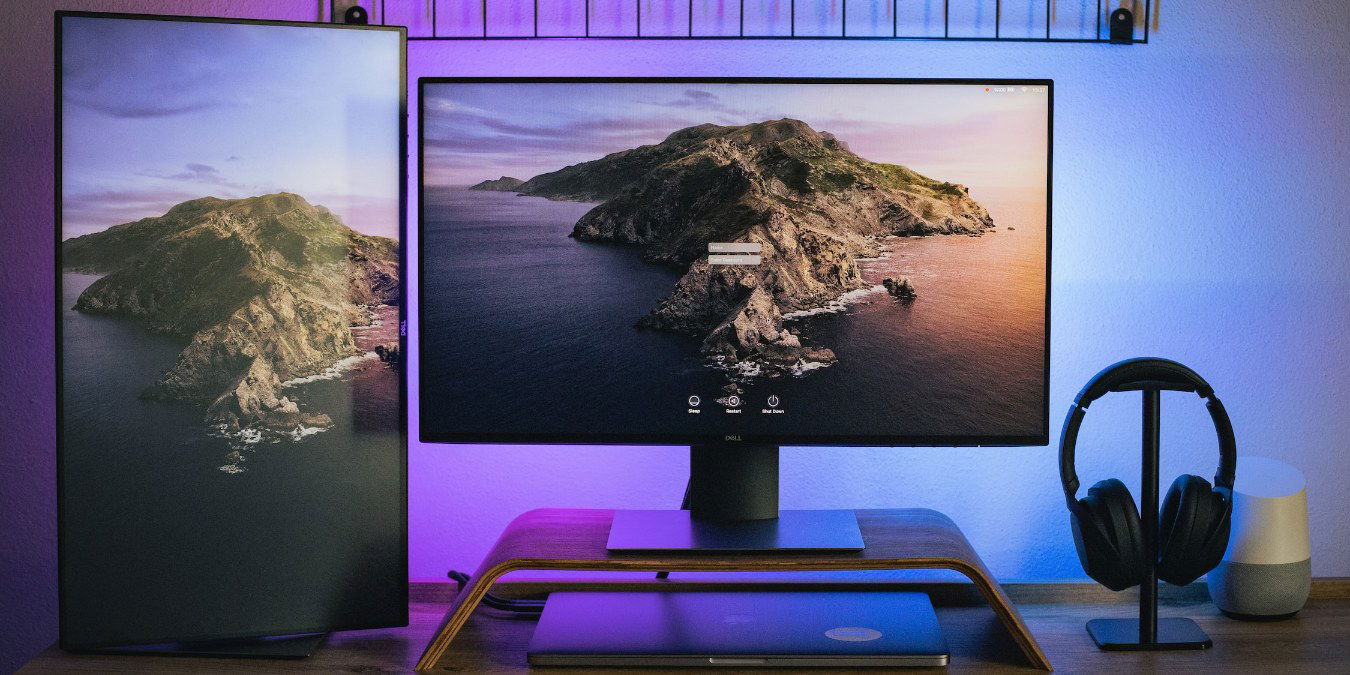
Rotating your PC or laptop screen on Windows might not seem relevant until you actually need it. Luckily, changing your display orientation to suit your specific use case is pretty straightforward. Let’s learn how to rotate your screen in Windows.
Tip: make your Windows interface look unique with these apps.
Content
- 1. Windows Settings
- 2. Keyboard Shortcuts
- 3. GPU Settings
- 4. Disable Rotation Lock on Tablets and Laptops
- Frequently Asked Questions
Why Would You Want to Rotate Your Screen on Windows?
If you never rotated your screen on Windows, doing so for the first time might feel a little daunting. As it turns out, there are a few prevailing scenarios where screen rotation proves not only useful but downright necessary. These include:
- Having a multi-monitor setup with one screen in vertical orientation – can boost productivity for programmers or people who are working with a lot of text.
- Setting a single monitor to vertical orientation – useful for activities such as photo editing or graphic design.
- Working with 2-in-1 Windows laptops or Windows tablets – for situations when apps require portrait mode to work properly.
- Dealing with a random upside-down screen – rotating your screen will bring things back to normal.
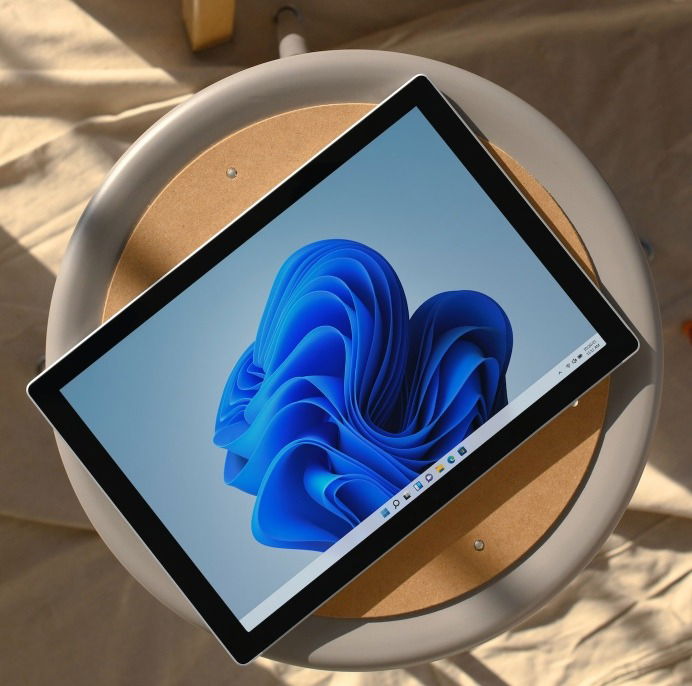 Image source:
Image source:
Unsplash
It’s not necessary to have multiple monitors or touchscreen devices to use screen rotation on Windows. If your monitor supports the pivot function, you can rotate it by 90 degrees and use your screen vertically. Below, you’ll learn how to enable the feature.
1. Windows Settings
One of the easiest ways to activate screen rotation for your display is to go through Settings in Windows.
- Right-click anywhere on the desktop and select “Display settings” from the context menu.
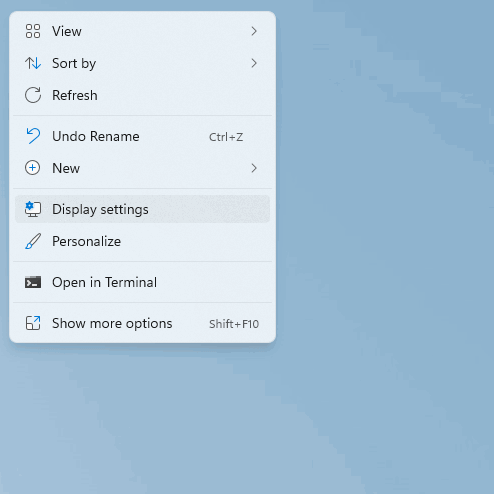
- On the right, scroll until you get to the “Scale & layout” section. Select “Portrait” from the drop-down menu next to “Display orientation.” Alternatively, you can opt for “Portrait (Flipped)” or “Landscape (Flipped).”

- A dialog box will pop up asking you to confirm the change or revert to the earlier settings. Click “Keep changes” to retain your new screen orientation. Note that if you don’t select any option before the timer runs out, your screen will automatically revert to the previous orientation.
Good to know: streamline your workflow in Audacity with these keyboard shortcuts.
2. Keyboard Shortcuts
With the help of an app called Intel Graphics Command Center, you can take advantage of keyboard shortcuts to easily change your display orientation. Intel systems might already have the app preinstalled as part of driver packages. If not, you can always download and install it. These shortcuts or hotkeys will work on both Intel and non-Intel systems. You need to enable the hotkeys in the application once to keep using the shortcuts for a quick screen rotation.
Note: some of the app’s other features will be unavailable for non-Intel systems.
- Install “Intel Graphics Command Center” from the Microsoft Store and launch it.
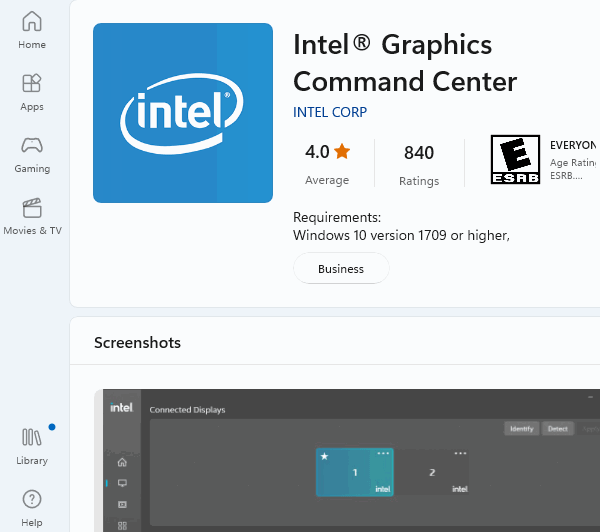
- In the “System” tab on the left, turn on “Enable System HotKeys.”
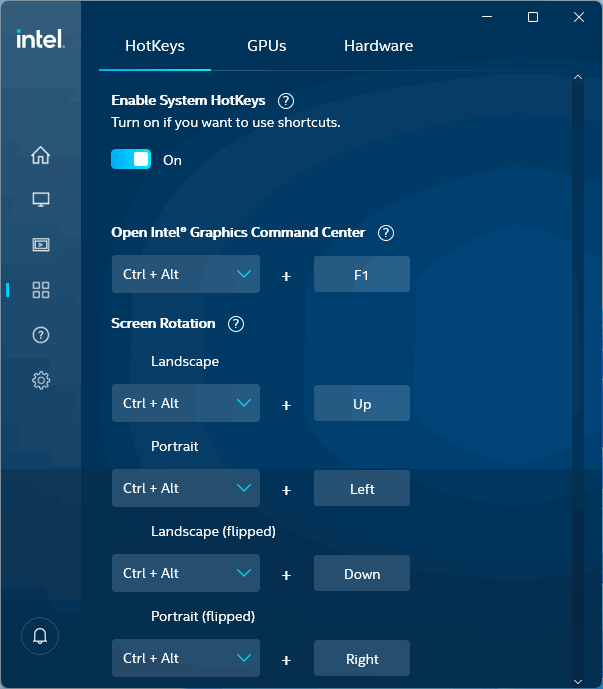
- The application requires you to turn on “Automatically save my restartable apps and restart them when I sign back in” via “Accounts -> Sign-in options.” It’ll automatically launch a pop-up to take you directly to the required settings page.
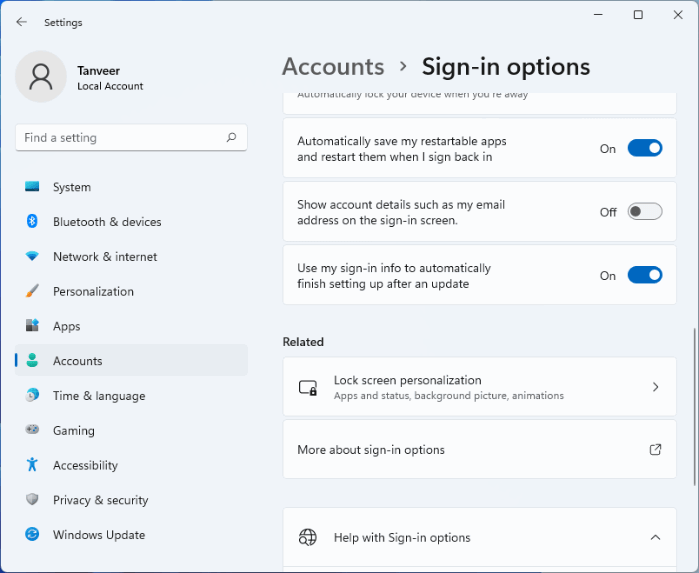
- Close the settings page and the Intel Graphics Command Center window. To rotate your screen, you can now employ one of the various key combinations. For instance, to rotate the screen to the right by 90 degrees, press Ctrl + Alt + →. If you wish to rotate it left by 90 degrees, try Ctrl + Alt + ←.
3. GPU Settings
Another method you can use to rotate your screen uses your graphics card’s dedicated software. Those with a computer running Intel graphics can use the Intel Graphics Command Center as shown in the previous method. Those with an NVIDIA or AMD graphics card have access to the NVIDIA Control Panel and AMD Radeon Settings, respectively. For the purposes of this tutorial, we are using the NVIDIA option.
- Launch the NVIDIA Control Panel.
- Navigate to “Rotate display” under the “Display” section on the left.
- Select your preferred display orientation on the left.
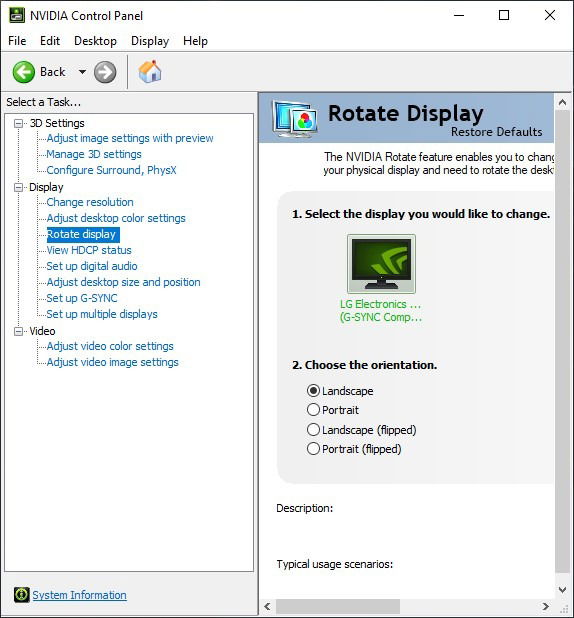
- Click “Apply” to save your changes.
4. Disable Rotation Lock on Tablets and Laptops
On Windows tablets and 2-in-1 laptops, rotating the device should automatically rotate your screen. If this feature isn’t working, you may need to check whether “Rotation lock” is enabled in Settings.
Right-click on the desktop and select “Display settings.” Next to “Display orientation” under “Scale & layout,” you’ll see “Rotation lock” if you’re on a tablet or 2-in-1 device.
Disable “Rotation lock” if it’s enabled to rotate your device, and your screen will rotate accordingly.
Tip: seeing an error code 43 in Windows? It’s a sign that your GPU might be malfunctioning. Here’s how to fix it.
Frequently Asked Questions
Why is my computer screen upside down?
Installing Windows updates or making changes to the registry can sometimes result in an upside-down screen. You can try enabling “Rotation lock” in Display Settings on your tablet or 2-in-1 to ensure your screen doesn’t rotate automatically. On other devices, use one of the methods above to revert your screen back to the normal landscape mode.
Why is my screen not rotating?
On Windows tablets or 2-in-1 devices, ensure that “Rotation lock” is disabled in “Display Settings.” On desktops and other laptops, if you’re trying to use keyboard shortcuts, first install Intel Graphics Command Center from Microsoft Store, then enable hotkeys in the application.
How do I change the location of my taskbar?
In Windows 11, you have the option to change the taskbar position to the left side of the screen. Right-click the taskbar, select “Taskbar settings,” navigate to “Taskbar behaviors,” and select “Left” from the drop-down next to “Taskbar alignment.”
Windows 10 gives you more options to align your taskbar around the screen. You can right-click the taskbar, select “Taskbar settings,” and choose “Left,” “Right,” “Top,” or “Bottom” from the drop-down next to “Taskbar location on screen.” If you want more from your taskbar, check out these tips to customize the Windows 11 taskbar.
Image credit: Unsplash. All screenshots by Tanveer Singh.
After a 7-year corporate stint, Tanveer found his love for writing and tech too much to resist. An MBA in Marketing and the owner of a PC building business, he writes on PC hardware, technology, video games, and Windows. When not scouring the web for ideas, he can be found building PCs, watching anime, or playing Smash Karts on his RTX 3080 (sigh).
Subscribe to our newsletter!
Our latest tutorials delivered straight to your inbox
Sign up for all newsletters.
By signing up, you agree to our Privacy Policy and European users agree to the data transfer policy. We will not share your data and you can unsubscribe at any time. Subscribe
